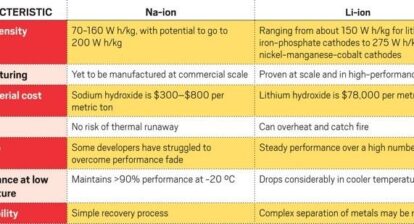It contains a type of non-toxic algae called Synechocystis that naturally harvests energy from the sun through photosynthesis.The tiny electrical current this generates then interacts with an aluminium electrode and is used to power a microprocessor.The system is made of common, inexpensive and largely recyclable materials. This means it could easily be replicated hundreds of thousands of times to power large numbers of small devices as part of the Internet of Things. The researchers say it is likely to be most useful in off-grid situations or remote locations, where small amounts of power can be very beneficial.
Researchers have used a widespread species of blue-green algae to power a microprocessor continuously for a year – and counting – using nothing but ambient light and water. Their system has potential as a reliable and renewable way to power small devices
The growing Internet of Things needs an increasing amount of power, and this will have to come from systems that can generate energy, rather than simply store it like batteries
The Internet of Things is a vast and growing network of electronic devices – each using only a small amount of power – that collect and share real-time data via the internet.
Using low-cost computer chips and wireless networks, many billions of devices are part of this network – from smartwatches to temperature sensors in power stations. This figure is expected to grow to one trillion devices by 2035, requiring a vast number of portable energy sources.
Powering trillions of Internet of Things devices using lithium-ion batteries maybe impractical: it would need three times more lithium than is produced across the world annually. And traditional photovoltaic devices are made using hazardous materials that have adverse environmental effects.
The system worked consistently over a long period of time – we thought it might stop after a few weeks, but it just kept going,” said Dr Paolo Bombelli in the University of Cambridge’s Department of Biochemistry, first author of the paper.The algae does not need feeding, because it creates its own food as it photosynthesises. And even though photosynthesis requires light, the device can even continue producing power during periods of darkness. This maybe because the algae processes some of its food when there’s no light, and this continues to generate an electrical current.
This article was first published at World Sustanability Collective. Read the original article here.
Saima Baig
I am a Chartered Environmentalist from the Royal Society for the Environment, UK and co-owner of DoLocal Digital Marketing Agency Ltd, with a Master of Environmental Management from Yale University, an MBA in Finance, and a Bachelor of Science in Physics and Mathematics. I am passionate about science, history and environment and love to create content on these topics.



It’s the size of an AA battery but doesn’t have any Lithium in it. This photosynthesis device doesn’t run down the way a battery does because it’s continually using light as the energy source.